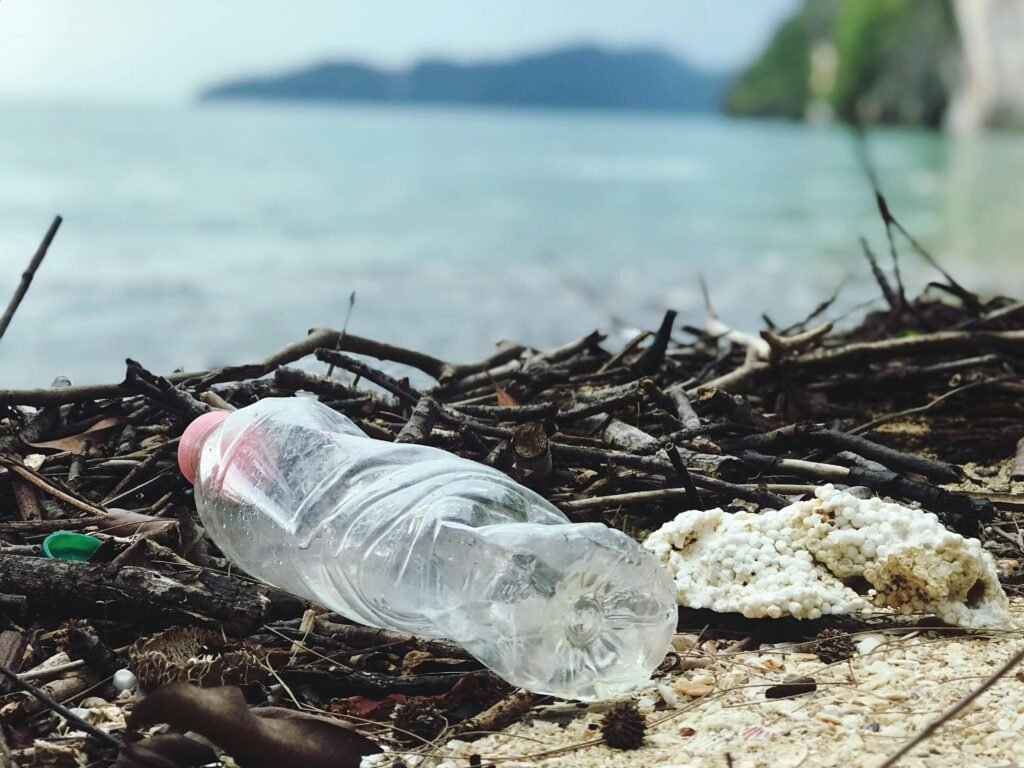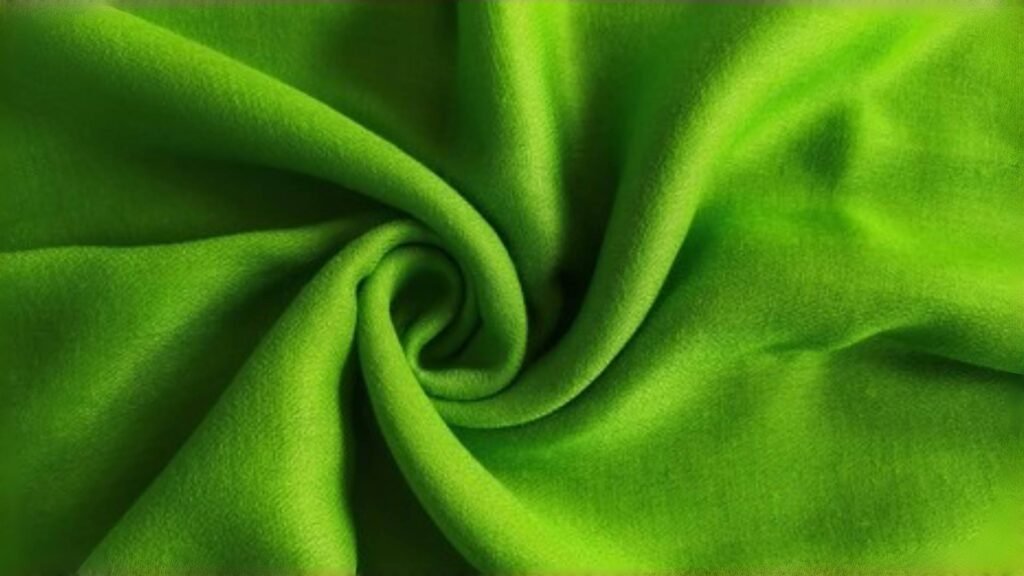Recycled polyester, commonly known as rPET, has become increasingly popular in recent years—especially in the fashion and activewear industries.
Made from post-consumer plastic waste such as water bottles, rPET helps reduce reliance on virgin petroleum-based materials and is often marketed as a sustainable alternative to traditional polyester.
Major brands like Adidas have pledged to use 100% recycled polyester by 2025, reflecting a growing global commitment to circular fashion.Recycled polyester must be a trend in the future ,but it is also neccessary for to know their disadvantages.
So let’s explore some of the key disadvantages of recycled polyester that you might not have heard about.

1.Recycled Polyester Is Not Biodegradable
While recycled polyester (rPET) is often praised as a sustainable alternative to virgin polyester, it is still a form of plastic—and does not biodegrade in natural environments. This means that:
1) If not properly recycled again, it still pollutes the environment.
If rPET garments are discarded in landfills or enter waterways, they can persist for decades or even centuries, just like traditional plastic. Over time, they may break down into microplastics, which pose serious risks to marine life and ecosystems. Without an effective closed-loop recycling system, recycled polyester becomes another form of long-term waste.
2) Compared to natural fibers, recycled polyester lacks certain performance benefits.
Although rPET performs well in terms of durability and moisture-wicking, it often falls short when it comes to breathability, softness, and overall comfort—especially when compared to natural fabrics like organic cotton, bamboo, or linen. Additionally, it tends to generate static electricity, can trap odors, and lacks the natural skin-friendliness of plant-based textiles.
2.The Supply Chain Is Imperfect, and the Price Is Relatively High
While recycled polyester is gaining popularity, the supply chain behind it is still developing and far from mature—especially when compared to the well-established virgin polyester industry.
1) The recycling and processing of rPET is more complex.
Transforming post-consumer plastic waste (like bottles or textile scraps) into usable fiber involves multiple steps—including collection, sorting, cleaning, de-labeling, melting, and extrusion. These processes require advanced technology, quality control systems, and certification standards like GRS. Compared to the mature and streamlined supply chain of virgin polyester, rPET production faces higher logistical and technical barriers.
Limited scale and technical complexity lead to higher costs.
Due to the lower availability of high-quality recycled feedstock and the technical difficulty in achieving consistent fiber performance, rPET is generally more expensive than virgin polyester. Additionally, since global demand is still growing but not yet scaled, economies of scale have not been fully realized—contributing further to its relatively high market price.
How is recycled polyester made ?
There are two main ways recycled polyester is produced—mechanical recycling and chemical recycling—and each comes with its own drawbacks in terms of cost, scalability, and quality.
1) Chemical recycling: advanced but costly and limited
Chemical recycling involves breaking down PET plastic into its original monomers, such as TPA (terephthalic acid) and EG (ethylene glycol), and then re-polymerizing them to create new polyester.
While this method can produce high-quality fiber comparable to virgin polyester, it comes with significant disadvantages:
- Higher production costs
- More complex and energy-intensive technology
- Limited availability of industrial-scale facilities
As of now, only a few companies have successfully commercialized this process, making it less accessible for most brands and manufacturers.
2) Mechanical recycling: more common, but lower quality
Mechanical recycling, the more widely used method, involves cleaning, shredding, melting, and extruding plastic waste into fibers.
Though more cost-effective, it has serious limitations:
- The fiber quality degradeswith each recycling cycle due to polymer breakdown
- Color control is difficultbecause the feedstock (plastic bottles, etc.) varies in color, requiring dark or blended shades to mask inconsistency
- Not suitable for high-performance fabricswithout additional blending or treatment
4.Recycled Polyester Releases Microfibers During Washing
One of the biggest hidden environmental drawbacks of recycled polyester is that—just like normal polyester—it sheds microplastic fibers (also called microfibers) during washing.
1) Microfiber pollution is a serious environmental issue.
Every time you wash synthetic garments, including those made from rPET, tiny plastic fibers are released into the water. These microfibers are too small to be fully captured by wastewater treatment systems, so they often end up in rivers, lakes, and oceans.
Studies have shown that a single load of laundry can release hundreds of thousands of microfibers, which can be ingested by marine life and eventually enter the food chain.
2) Recycled polyester does not solve this problem.
Even though rPET reduces plastic waste and petroleum use, it does not address microfiber shedding. In fact, depending on the fabric construction and yarn type, some recycled polyester textiles may shed more fibers due to lower polymer strength or shorter fiber length.
This makes microfiber pollution a critical sustainability challenge—even for clothing labeled as “eco-friendly.”
Even though recycled polyester still has negative impact for natural world. But it improved a lot for environment compare to normal polyester .That is why more and more brand and consumer are using it .There is very frequent question for consumer & brand :

How to Wash Recycled Polyester Activewear?
- Wash in Cold Water:Washing in cold water reduces friction, which means fewer microfibers will be shed from the fabric.
- Use a Gentle Cycle:The more gentle the wash, the less agitation, which helps reduce fiber shedding
- Wash Less Frequently:Activewear, especially recycled polyester, doesn’t need to be washed after every use unless it’s heavily soiled or sweaty. Frequent washing increases the chance of microplastic release.
- Avoid Fabric Softener:Fabric softeners coat the fibers and can break down the fabric faster, leading to more microplastic shedding
- Air Dry Instead of Using a Dryer:Heat from the dryer can damage the fabric, leading to more fiber shedding. It also makes clothes less durable over time.
- Use a Front-Loading Washer:Front-loading washers are gentler on clothes than top-loading washers because they don’t use an agitator, which can cause more friction and fiber loss.
- Washing at Lower Spin Speeds:High spin speeds can cause the fabric to fray and release microplastics. Lower speeds are gentler on the fabric.
Leading Brand's Action On Recycled Polyester
Major international sportswear brands have already begun shifting toward sustainable sportswear:
- Adidas: Introduced “Parley” ocean plastic shoes and targets using 100% recycled polyester by 2025
- Nike: Launched the “Move to Zero” campaign, aiming for zero carbon and zero waste
- Puma, Reebok, Patagonia: Promoting collections made with recycled polyester, organic cotton, and low-impact dyes
Accept Disadvantage,Accept Future
Even though recycled polyester has some disadvantages ,but it helped a lot for environment compare to normal polyester .If you’re still wholesaling conventional activewear, it’s time to rethink.
👉 We are a professional activewear manufacturer specializing in sustainable materials. Contact us to explore recycled, organic, and ethical production options at scale.

